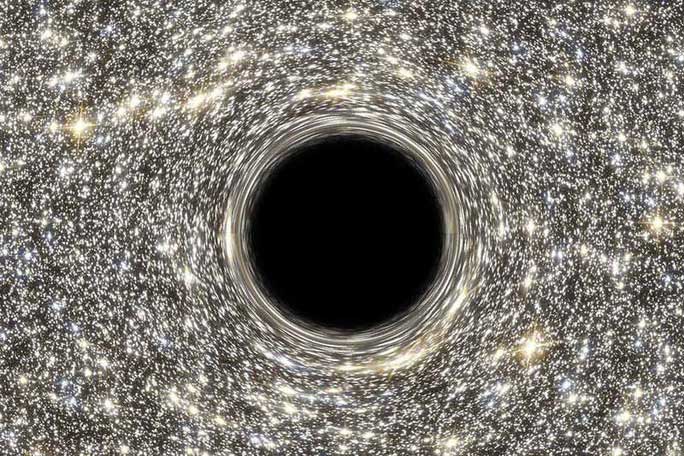Is there a 'black hole solar system' that owns ... 10,000 planets?
A study just published online on arxiv.org has confirmed the ability to form a giant solar system with the parent star is a . black hole monster.
The team, led by Dr. Keiichi Wada from Kagoshima University (Japan), has used astronomical models to prove the existence of a huge "Solar System" with the number of possible orbiting planets. up to 10,000.
Most importantly, the center of the "Solar System" is not a brilliant star like our sun or every known planetary system, but a "monster" black hole - the term used. to refer to the supermassive black holes that are hard to imagine.

Stunning images of a supermassive black hole - (photo: GODDARD SPACE CENTER, NASA).
In order to survive without being sucked away, the nearest planet in this system must be at least 10 light-years away from the "black hole sun" . For comparison, the distance from the sun to the Earth is only 0.00001581 light years (149.6 million km).
And with the number of planets up to 10,000, it will be a huge planetary system, beyond imagination. The way it formed is quite similar to normal planetary systems, because the black hole's surroundings allow the existence of the planet-forming disks, in which clouds of gas and dust coalesce and give birth. new planets.
Some previous studies show that supermassive black holes often exhibit time dilation , which is thought to inhibit planet formation . But according to the new work, at distances as far as 10-30 light years, the planets will escape this inhibition and still have a cosmic dust-rich environment to form.
Speaking to New Scientist , scientist Sean Raymond from the University of Bordeaux (France), who was not involved in the study, praised the work. According to him, in theory, it has long been thought that there could be millions of planets orbiting a supermassive black hole. This work has confirmed for the first time that it is possible. Directly observing such a planetary system will be difficult because of distance constraints, but indirect evidence can be obtained through infrared astronomical tools to understand the disk of planet formation around the planets. "monster" black hole .
- Video: Compare the size of black holes in the universe
- Is the giant hole in the Sun really scary?
- Detecting a black hole
- The supermassive black hole is about to swallow 3 clouds of Earth
- Shocking theory: The mysterious 9th planet in the Solar System could be a black hole
- Discovering a black hole 40 billion times larger than the Sun.
- Detecting solar black holes 6 times the diameter of the Earth
- Black force - a new force in the universe, becomes even more strange
- Discover the mystery of the most exotic black holes in the universe
- Will humans migrate near the black hole in the end of the universe?
- Unknown mystery about planets outside the solar system
- 740 million light years away is a completely different universe of black holes
 Van Allen's belt and evidence that the Apollo 11 mission to the Moon was myth
Van Allen's belt and evidence that the Apollo 11 mission to the Moon was myth The levels of civilization in the universe (Kardashev scale)
The levels of civilization in the universe (Kardashev scale) Today Mars, the sun and the Earth are aligned
Today Mars, the sun and the Earth are aligned The Amazon owner announced a secret plan to build a space base for thousands of people
The Amazon owner announced a secret plan to build a space base for thousands of people